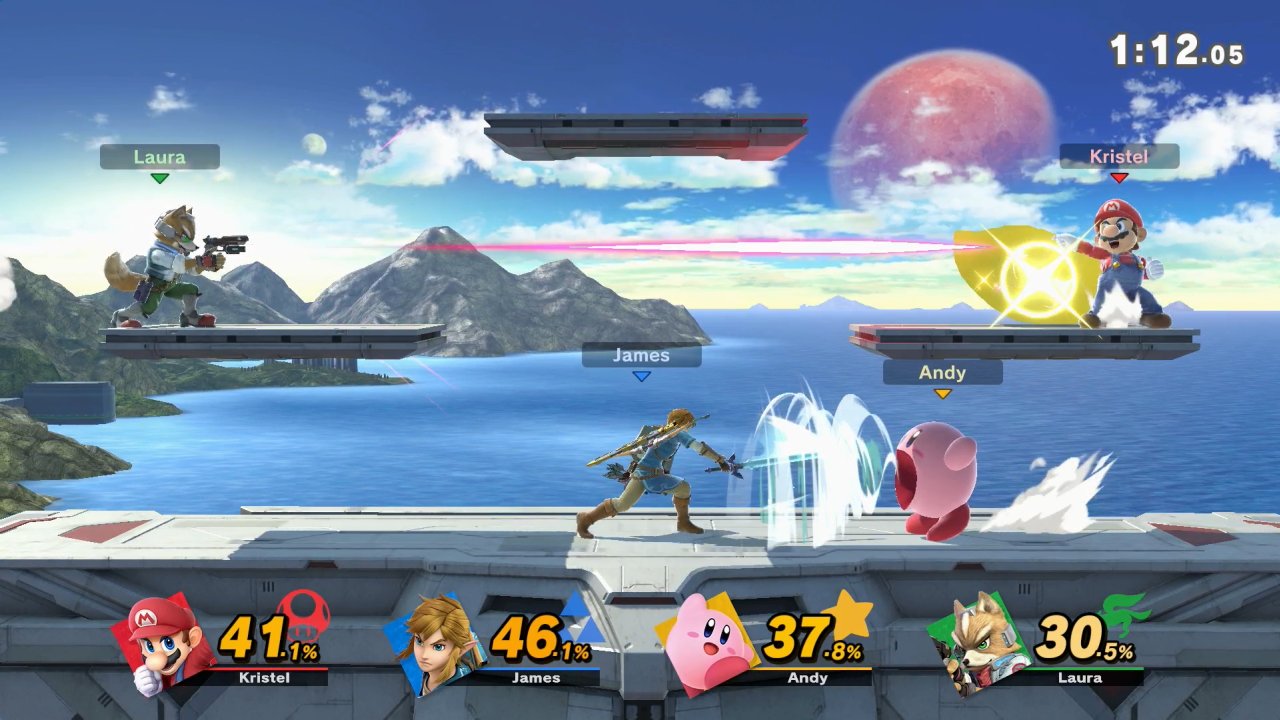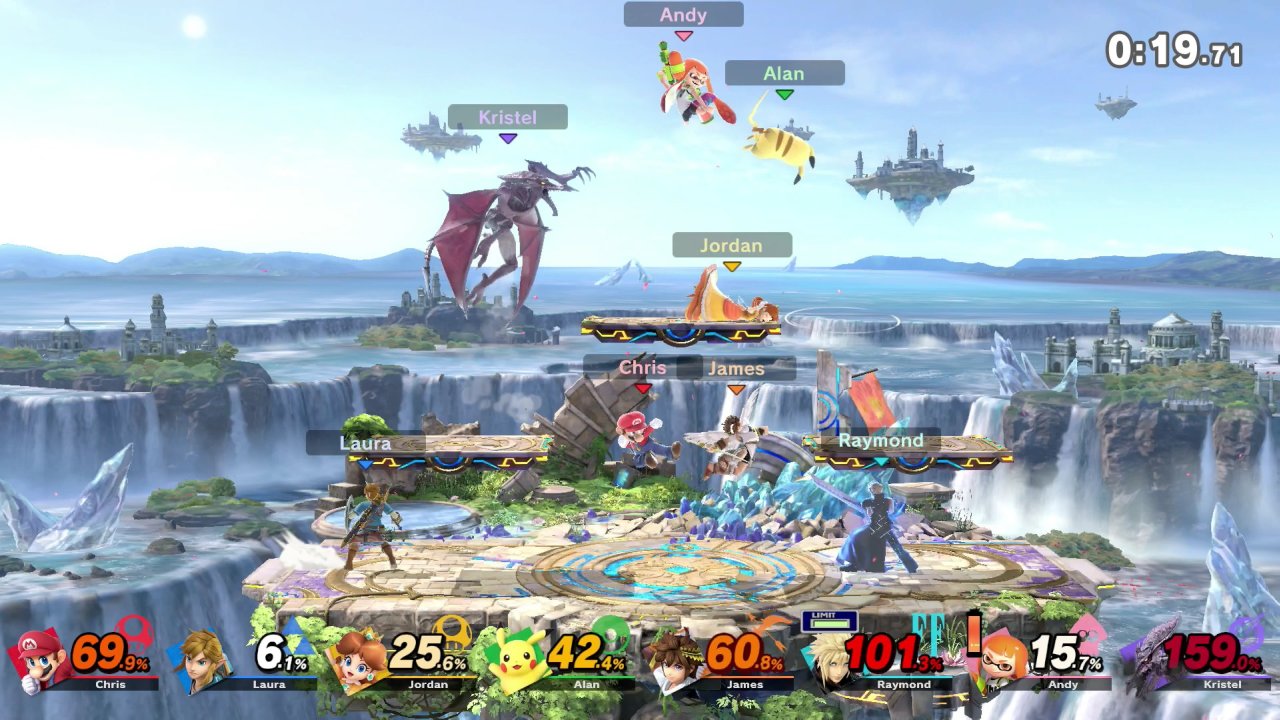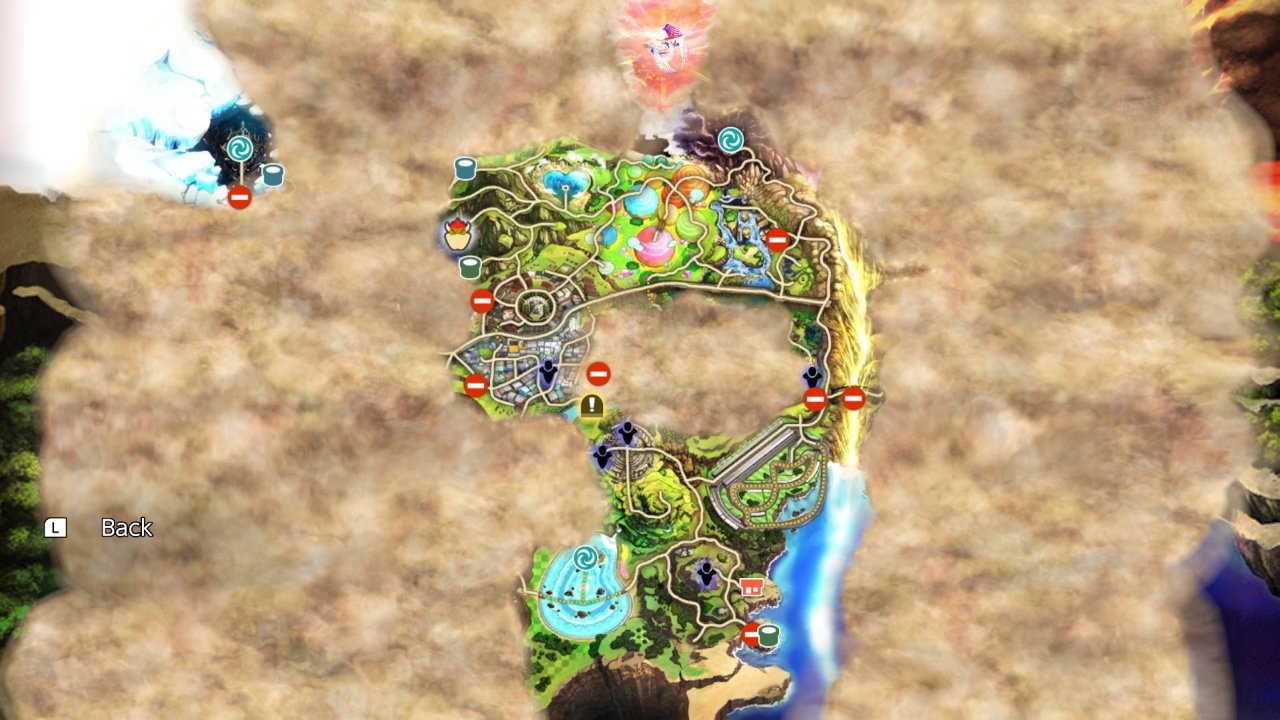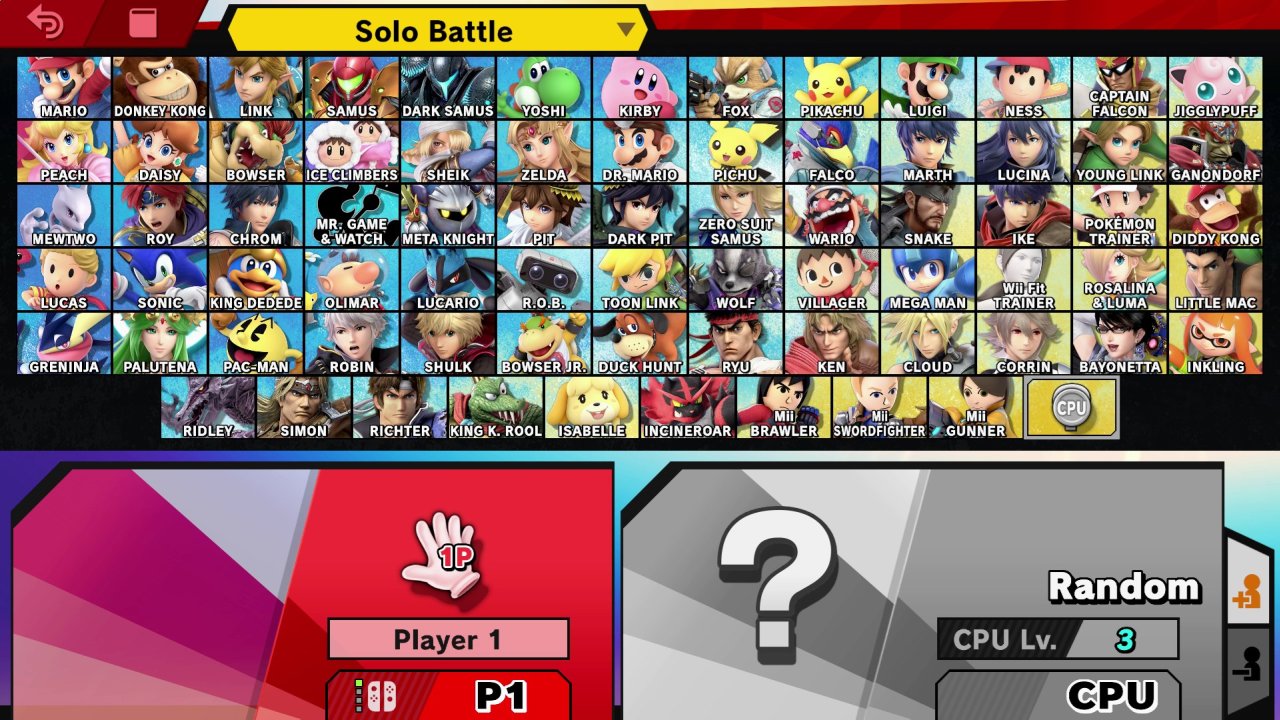Super Smash Bros. Ultimate Review
Move over, Melee, there’s a new heavyweight champion in town, and its name is Super Smash Bros. Ultimate – and man, is it ever ultimate. The game is a culmination of just about everything fans adore about this zany party-fighting bonanza that is Super Smash Brothers – and then some. It’s a decadent feast bursting at the seams with content, and sports an almost absurd array of customizable options, stages, and characters, along with the game’s standout new concept, Spirits. Ultimate is simply a non-stop pummeling of action-packed fun, along with plenty of warm and fuzzy nostalgia from Nintendo games and other iconic franchises.

The game resembles a souped-up evolution of the Wii U entry in a sense, but infused with the tight and nuanced mechanics diehards loved from Melee. Additionally, it adds a number of elements to (mostly) keep this from feeling like a “Smash 4.5”. The most notable example is the RPG-esque World of Light adventure mode; a massive series of battles tied together by a colorful overworld map full of branching paths. This feature, while not perfect, adds some meat to the solo Smash experience that even Brawl’s Subspace Emissary couldn’t quite match.
Perhaps the biggest appeal to Ultimate though, is that the game contains every character ever featured in the series. While you only start with 8 (the original N64 bunch), you can end up with a grand total of 74, with more to follow in DLC packages. This includes 11 brand new characters; some of which are “Echoes”, who mostly mirror other fighters – think Samus vs Dark Samus, and Ryu vs fellow Street Fighter alum Ken. The prospect of unlocking these fighters is usually sufficient to keep the player coming back for more – if the addictive, satisfying beat-em-up gameplay isn’t enough already.
Not only do you have an almost overwhelming number of fighters to choose from, but the lineup is as diverse as ever when it comes to movesets and play styles. You’ve got everything from the speedy sword fighters Marth and Corrin, to the powerful, lumbering (not to mention enjoyable) K. Rool and Ridley. You’ve got a few oddballs, like Inklings, whose shot potency hinges on how much ink they’re packing, and need to refuel to optimize their impact. You’ve got Castlevania’s Simon Belmont, with his ridiculous whip range and emphasis on projectiles. Most of the returning fighters have been given at least slight aesthetic and mechanical tweaks as well.
As before, each character is given a main attack, special move, as well as the enjoyable Final Smash; in which unique epic animations precede death-dealing blows. These are triggered by walloping erratically floating orbs – which also come in deceptive explosive versions. But a new addition with Ultimate is the ability to gain this power through a meter which fills up when engaged in fights, in a sort of Power Stone-esque mechanic. The mechanics definitely lean in a more Meele-style of quickness and complexity, and certain nuances have been added or brought back. These include short hops, mid-air dodging, and increased vulnerability when spamming certain evasion techniques. These sorts of elements are such that more casual players can still jump right in, but also offer a foundation from which skilled players can flex their abilities in competitive eSports. Oh – you’ve also got the addition of a super satisfying freeze-frame smash attack, where the camera zooms in on your character during a death (or near death) blow once heavily damaging your opponent.

There is an impressively robust palette of multiplayer modes, customizations, and stages to fight in, providing a near endless stream of replayability. Each of the whopping 103 stages are available at your disposal right off the bat. Not to mention, you can now play any stage in either Battlefield form (3 platforms), a single platform “Omega”, or its normal dynamic form full of hazards. So now, not only can you adjust item appearances and switch off hazards, but you can choose to play a simplistic, up close and personal street Smash with any of the gorgeous environmental backdrops setting the scene.
The visuals this time around are prettier than ever. The charming environments are sure to invoke plenty of nostalgia and most look simply stunning. The animations are intricate, flashy, and amusing to behold, and the game runs at a mostly smooth 60 FPS. The fantastic soundtrack, which offers hundreds of serenading melodic tunes drawing from decades of Nintendo lore, adds to the rich, epic nature of these environments. You can enjoy these songs on their own, and even create music playlists in the game’s Sound Test mode.
It should be no secret that Ultimate, like its predecessors, thrives most with its local multiplayer. You can choose from a vast array of rulesets – timed, stock, or stamina battles, and tweaks can be made within these parameters. For the sake of convenience, these options can even be saved and stored. On top of normal multiplayer battles, which can range from 1 v 1 romps to insane 8 player free-for-alls, you can fight in teams, a tourney-bracket mode, or a tag-team “Squad Strike”. These proved to be fun diversions with a new twist on competitive showdowns. One mode that stood out for me was Smashdown, which forces you to fight with a dwindling number of fighter options during a sequence of battles, adding some strategy and keeping you off balance. You’ve even got option to tinker with attributes like head and body size, or square off in heart-pounding sudden death battles.
But what of the online content; does Nintendo deliver this time? Well, yes and no. In terms of the strength and reliability of the connection, it’s mostly solid in my experience. Out of a given 10 matches, roughly 8 ran with barely a hitch, while 1 chugged along with some mildly annoying lag stutter, and 1 would freeze for about 5 seconds before eventually stabilizing. Total disconnects or connection errors were rare at least. Since the battles are peer to peer, you’re at the mercy of individual connections.
Random matchmaking boils down to either predetermined quick matches, or the somewhat peculiar setup of Battle Arena, where you can customize lobbies and choose to jump into the ring to fight, or spectate as you wait for the next match. You’ll also use this arena setup to hop into friends’ matches, which can prove a bit cumbersome and limiting, although it’s still a step up from Smash 4, and, God forbid, Brawl’s archaic matchmaking.

A few welcome attributes, which help flesh out the online mode, include a sort of universal scoring system called “GSP”, as well as matchmaking preferences which allow you to seek specific rulesets. One issue, though, is that while you can play online quick matches with 2 players on one console, this is oddly absent in Battle Arena mode. And of course, we’re still missing a cohesive way to voice chat. Sure, the game’s online mode as a whole produces some fun and addictive gameplay and further fattens the already mammoth replayability. Overall though, the infrastructure is still rather bare for a game that so heavily emphasizes multiplayer.
There does seem to be a notable effort to beef up the solo gameplay at least, and it’s an improvement compared to past iterations. The game’s campaign, World of Life, is quite robust, at least when it comes to sheer content. It opens with a truly epic cutscene which shows just about everyone in Nintendo land being engulfed by a sort of divine force called Galeem, who commands an army of Master Hands. It’s grandiose and nonsensical, but to even attempt any coherent narrative with this kind of game is admirable.
Only Kirby makes it out unscathed, so it falls on him to venture forth and liberate the captured souls of each fighter. The game consists of a hodgepodge of countless brief battles with varying conditions. These are strung together by a massive overworld map with 2D environments alluding to a variety of Nintendo games. Battles usually contain a random mix of fighters augmented with “Spirits”, which are basically collectable buffs, immunities, or abilities. These Spirits are personified by lesser Nintendo characters, some of which only Nintendo diehards will recognize. There are also support Spirits with additional buffs, which can be piled onto the main ones. A Spirit attached to a fighter will usually cleverly relate to or resemble the fighter somehow, like a Ridley fighter donning a Charizard Spirit, etc. Scattered about are also straight up encounters with new fighters, who you can both recruit and unlock universally upon defeating.
Once a match is completed, the Spirit latched onto that fighter will be yours, which you can utilize depending on what the situation calls for. There might, for instance, be one that grants you immunity to poison, which you’ll want to bust out during a level that contains poison clouds. Spirits also come equipped with tactical styles that run on a sort of rock-paper-scissors style of hierarchy. All these buffs add a sort of pseudo-RPG element of versatility and strategy throughout. Still, they felt a bit excessive and unnecessary at times. Since many of the matches prove easy if you’re a decent player, much of my strategy boiled down to maxing out the level of one of each type of Spirit (offense, defense, grab). I would then pick the Spirit that matched up favorably with an opponent, and often earned a victory within seconds. Most spirits went unused in my playthrough, though some can be sent on “quests” to scavenge items, as well as to clear occasional obstacles.

This isn’t to say World of Light is a total cakewalk, however. There were moments I had to grind out a hard-fought victory, particularly on stages against a team of multiple, overpowered opponents, or with ridiculous conditions like direction switches or high winds. The difficulty spike proved a bit erratic and all over the place at times. Overall though, I enjoyed the journey that was World of Light, even if it grew a touch repetitive and felt a bit gimmicky with the emphasis on Spirits. In addition to this mode, you’ve got the Spirit Board, which are live, ongoing events that are swapped out over time. These serve as pretty minor distractions, which are basically akin to World of Light battles, but often even more chaotic and tricky.
Thankfully, Classic Mode also makes a return, which is, in a sense, dialed back in complexity, but more than made up for with the huge diversity of paths. In fact, every fighter now has their own individual path containing a handful of battles with opponents and bosses usually tailored to their lore. K. Rool, for instance, will have to fight Donkey Kong, and Mario will have to square off against Bowser. You’ll often unlock fighters upon completion, and gain a smorgasbord of goodies depending on the difficulty you choose. Another solo mode includes a pretty exciting survival mode against an army of Mii Fighters (think Neo vs the army of Agent Smiths), or, if you’re a glutton for punishment, you can get instantly annihilated in the absurdly difficult “Cruel Smash” mode. This mash-up of single player offerings isn’t perfect, though Smash Brothers was never meant to be about the solo experience.
This latest Smash Brothers iteration still has a few blemishes that hold it back from obtaining iconic status – namely the slim online features and somewhat flawed World of Light – but nails it in just about every other aspect. It’s a robust party package, a visual spectacle, and a satisfying multiplayer romp from top to bottom. As such, Ultimate stands as the definitive version of Super Smash Brothers, surpassing the nostalgic charm of the original, the breadth of Smash 4’s content, and at least matching the intricate, tight mechanics and complexity of Melee.
